| Do you know the best of 3 Ankoromochi in Japan? | |
| 日本三大あんころ餅を知っていますか? | |
| They are “Akafuku-ankoromochi” in Ise-City Mie-Pref, “Toraya-ankoromochi” in Kurashiki-City Okayama-Pref, and “Enpachi-ankoromochi” in Matto Hakusan-City Ishikawa-Pref. |
|
| 三重県伊勢市の赤福あんころ餅、岡山県倉敷市のとら屋のあんころ餅、 石川県白山市松任の圓八のあんころ餅です。 |
|
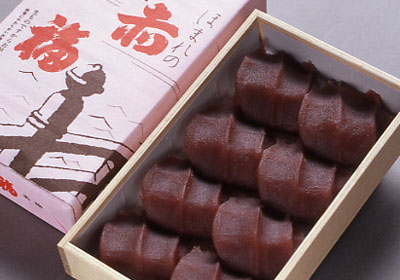 This is a "Akafuku-ankoromochi." これは”赤福のあんころ餅”です。 |
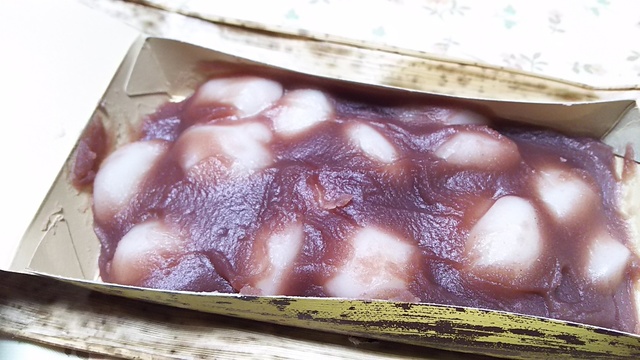 This is a "Toraya-ankoromochi." これは”とら屋のあんころ餅”です。 |
| I got “Akafuku” that the most famous ankoromochi in Japan, as a souvenir from my acquaintance the other day. |
|
| 私は先日、知り合いから、日本で最も有名なあんころ餅である赤福をお土産に頂きました。 | |
| To be honest, I was really disappointed with the taste. |
|
| 正直いって、私はその味にかなり、がっかりしました。 | |
| Because Enpachi-ankoro was more tasty than Akafuku. | |
| 赤福より圓八のあんころの方がずっと美味しかったからです。 | |
| I’m not partial to local sweets. | |
| 決して地元のお菓子を、えこひいきしているわけではありません。 | |
partial(パーシャル) 〜をえこひいきして、不公平な(形容詞) 例文My teacher is partial to girls. 僕の先生は女生徒をえこひいきします。 |
|
| The bean jam of Akafuku was too sweet, so I couldn’t eat them a lot. |
|
| 赤福のあんこは甘過ぎて、たくさん食べられませんでした。 | |
| You know, Akafuku is famous for its food impersonation case in 2007. | |
| ご存知の様に、赤福は2007年の食品偽装事件で有名ですね。. | |
impersonation(インパーソネイション)偽装 |
|
| Today, I’m going to talk about “Enpachi-ankoro”, our local Japanese sweets. | |
| 今日は私たちの地元の和菓子である、圓八のあんころについて話そうと思います。 | |
| Main shop is located in the Matto shopping street. | |
| 本店は松任商店街の中にあります。 | |
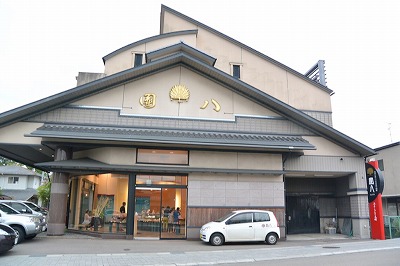 |
|
| Most Ishikawa people have ever eaten “Enpachi-ankoro” loved from people since the old days. |
|
| 圓八のあんころと言えば、ほとんどの石川県人は食べたことがあるというくらい 昔からお馴染みのお菓子ですよね。 |
|
| Of course, I know that you know Enpachi ankoro , but let me show you about it , anyway. |
|
| 皆さんが圓八のあんころのことを知っていらっしゃるのはもちろんわかっているのですが、 とりあえず説明させて下さい。 |
|
| Ankoromochi means ricecake covered beans jam shaped dumpling. | |
| あんころというのは、団子の形をしたあんこに包まれたお餅のことです。 | |
| Ankoromochi is compound (mixed) word . Anko means beans jam, koromochi means small ricecake shaped dumpling. |
|
| あんころ餅は合成語です。 あんこは餡子、ころもちは団子の形をした小さなお餅という意味です。 |
|
| They are wrapped by bamboo skin and there are 9 ankoromochi inside, it costs 370 yen. |
|
| 竹皮に包まれたあんころ餅が9個入って、370円です。 | |
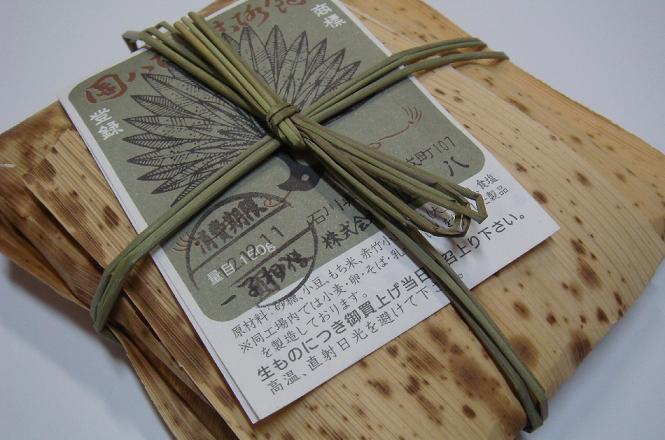 |
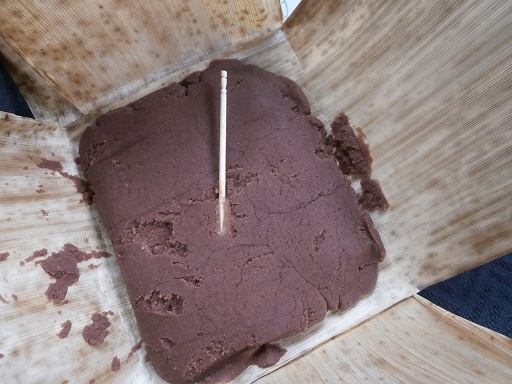 |
| I always time slip to Edo period by the package. It’s just like a scene from the drama of Mitokomon, isn’t it? |
|
| 私はその包みを見るといつも江戸時代にタイムスリップします。 まるで水戸黄門のドラマのシーンのようですよね? |
|
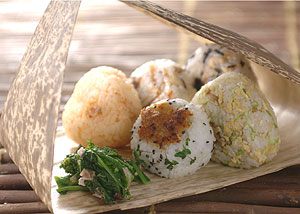 These are "Onigiri". これらは”おにぎり”です。 |
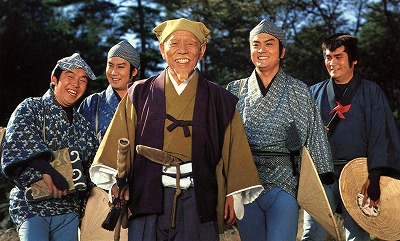 This is the drama of Mitokomon. これはドラマ”水戸黄門”です。 |
| When we open the bamboo skin, ankoromochi are crushed flat, but that’s the good point. |
|
| 竹皮を開くと、あんころ餅がぺったんこになっています(潰れています)が、そこがまたいいんです。 | |
| We can enjoy the anko with bamboo smell. | |
| 竹の香りのするあんこが楽しめます。 | |
| It’s not too sweet, we can feel the simple flavor of beans. | |
| 甘過ぎず、豆そのものの旨みが感じられます。 | |
| After I finish eating the ankoromoti, I scoop up all the anko with my index finger and lick them. |
|
| あんころ餅を食べ終わった後、私は残ったあんこを人差し指で全部掬い取ってなめます。 | |
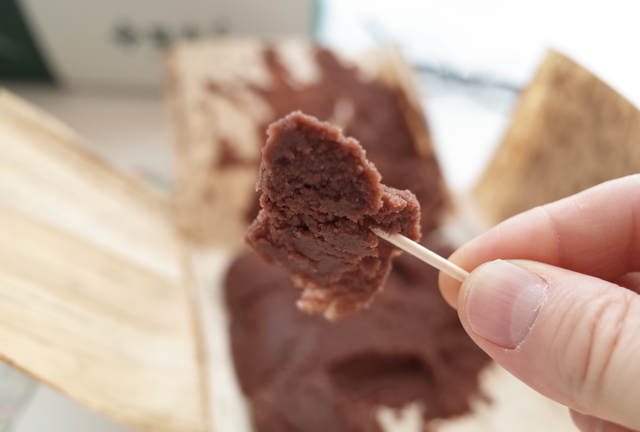 |
|
| Now l show you about a legend of Tengu handed down from ancestor of Enpachi (from the homepage of Enpachi). |
|
| それでは、圓八の先祖から伝わる天狗伝説についてお話ししましょう。 (圓八ホームページより) |
|
handed down from 〜 〜から伝承された |
|
| When the 2nd master of Murayama-family(family name of Enpachi), 42 year’s
old, he planted a young Rakan oak tree in the backyard in June 1737. |
|
| 1737年6月のこと、村山家(圓八の苗字です)2代目の主人が42歳の時、裏庭に 羅漢柏(ラカンカシワ=別名アスナロ)の苗木を植えました。 |
|
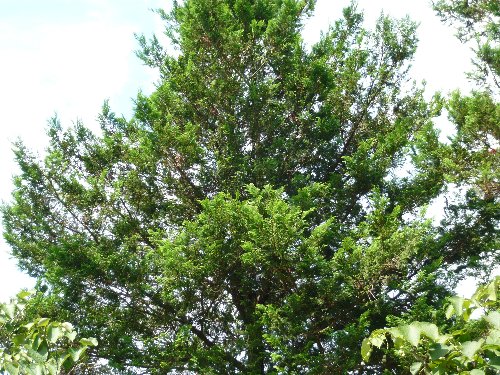 |
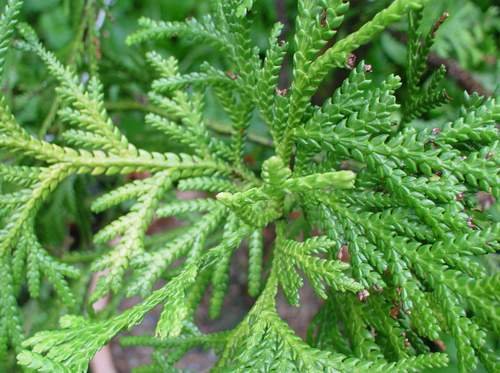 |
| He prayed to the tree, “If my wish comes true, the tree is going to grow
big", then he missed leaving his wife and child in the evening the day after. |
|
| 「私の願いが叶ったら、大きく茂る」と祈り、翌日の夕方、妻子を残して行方不明になったそうです。 | |
| They were poor. | |
| 妻子は生活苦に悩まされました。 |
|
| The wife had a dream of her husband dressed up Tengu at midnight in the autumn of the year. |
|
| その年の秋の真夜中、妻の夢枕に天狗の姿になった夫が立ちました。 | |
 |
|
| He said, “I’m training with Tengu in Mt.Kuramayama. Now I have something to teach you. If you make ankoromochi in this recipe, people will be in good health and prosperous business.” then he left from her dream. |
|
| 彼は「私は京都の鞍馬山で天狗について修行している。 今、お前に教えることがある。 これこれの作り方であんころ餅を作れば、息災延命、商売繁盛となるだろう。」 と言って夢から姿を消しました。 |
|
prosperous(プロスペラス)繁盛 |
|
| So that means, Tengu taught her how to cook the ankoromoti. | |
| つまり天狗が彼女にあんころのレシピを教えてくれたというわけですね。 | |
| That’s why, Enpachi family's crest is fan of Tengu. | |
| そういう訳で、圓八の家紋は天狗の扇です。 | |
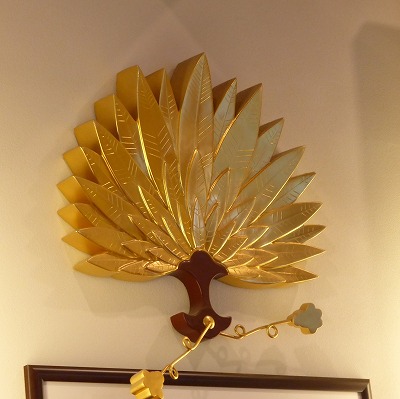 |
 |
| The history of Enpachi is old, the establishment is Edo Period in 1737, more than 270 years ago. |
|
| その歴史は古く、創業は江戸時代1737年ですから、今から270年以上前ということになります。 | |
 |
|
| It was founded in the 8th shogun Yoshimune Tokugawa(abarenbo-shogun)era. | |
| つまり、8代将軍の徳川吉宗(暴れん坊将軍ですね)の時代に創業されたのです。 | |
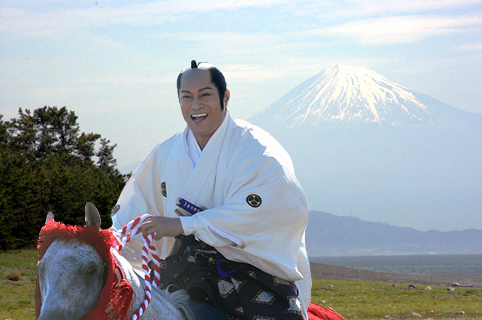 This is the popular drama "Abarenbo-shogun"in Japan. これは日本で人気のドラマ”暴れん坊将軍”です。 |
|
| Enpachi started pedding at the platform of Matto Station as soon as Hokuriku Line was opened in 31 Meiji period. |
|
| 明治31年、北陸線開通と同時に、松任駅構内での立ち売り営業を始めました。 | |
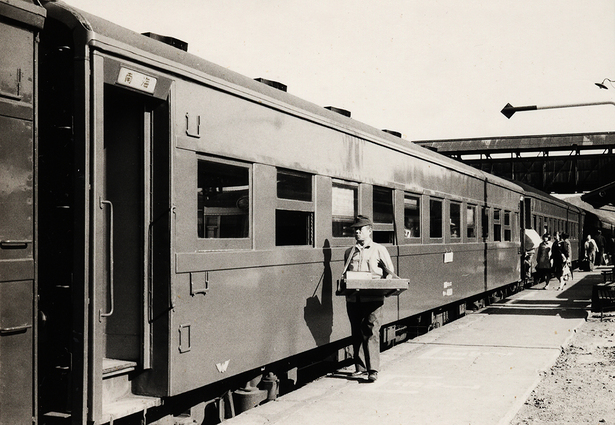 |
|
| But now it’s a pity that there are not standing sellers at Matto Station because only local train stops in there. |
|
| でも現在では、残念ながら、松任駅では鈍行の電車だけしか止まらないので、売り子さんはいません。 | |
| When I was a child, standing seller used to sell ankoro at the platform while shouting “Ankoro〜 Ankoro〜”. |
|
| 子供の頃、プラットフォームで売り子さんが「あんころ〜あんころ〜」と 掛け声をかけながら、あんころを売っていたものです。 |
|
| Do you know the name of Enpachi shopkeeper(president) ? | |
| 圓八店主(社長)の名前をご存知ですか? | |
| His name is Mr. Enpachi Murayama, the 12th shopkeeper. | |
| 12代目店主である村山圓八さんです。 | |
| Enpachi shopkeepers have been named "Enpachi” for generations. | |
| 圓八店主は代々、圓八と名付けられてきたのです。 | |
| The sun of shopkeeper(In the future, if his father dies, he’ll become Enpachi Murayama, the 13th) is talking about ankoro on line. |
|
| 店主の息子さん(もし将来お父さんが亡くなられたら、彼が13代目村山圓八さんとなります)の お話がインターネットに載っていました。 |
|
| "Enpachi ankoro is a simple sweets made from only sticky rice, red beans and sugar. |
|
| 「圓八のあんころは、もち米と小豆と砂糖だけで作るシンプルなお菓子です。 | |
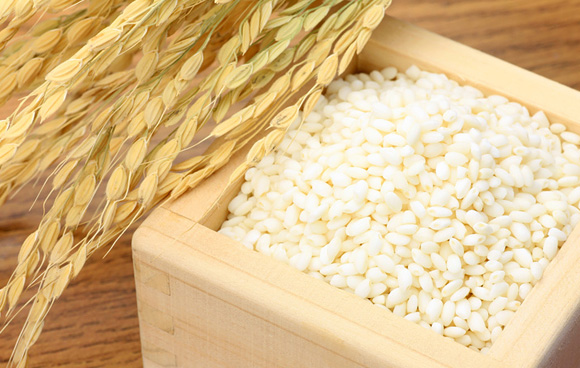 |
 |
| The bean paste is made from red beans of Tokachi Hokkaido. | |
| そのあんこは、北海道十勝産の小豆から作られます。 | |
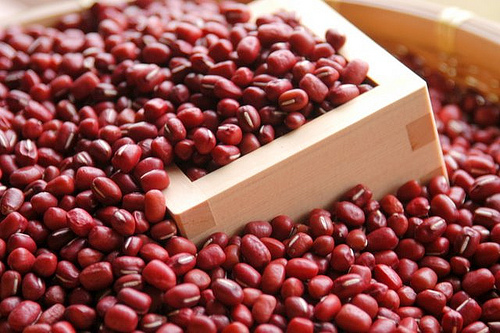 |
|
| The bean paste’s texture is silky because it is steamed not boiled. | |
| 炊かずに蒸すことによって、出来上がったあんこはさらっとした食感になります。 | |
| We started lighting boiler and making ankoro at 2:00 a.m.everymorning. | |
| 毎朝、午前2時にボイラーに火をつけ、あんころを作り始めます。 | |
| There are still the Rakan oak tree and Shrine of Tengudo in our backyard. | |
| 我が家の裏庭には今でも羅漢伯の木が茂り、天狗堂のほこらが鎮座しています。 | |
| We have a daily work of praying the shrine every morning and evening. | |
| 天狗堂には毎朝毎夕かかさずに参拝することを日課にしています。 | |
| We have pursued the taste of the common people from generation to generation, but we don’t think it’s still complete. |
|
| 代々、庶民の味を追求してきましたが、まだまだ完成だとは思っていません。 | |
pursue(パスー)〜を追いかける、追求する、追い求める from generation to generation 代々 |
|
| We are going to continue to keep the popular style that they can get it a few coins. |
|
| でも小銭数枚で買える気取りのないスタイルは守り続けていきます。 | |
| We hope that one package ankoro will be useful for a happy family.…… We are working hard in making sweets with such a thought.” |
|
| 一包みのあんころ餅がご家族だんらんのお役にたてますように……そんな思いを込めてお菓子作りに励んでいます。 | |
ここまでが圓八さんのお話しです。 |
|
| In the old days, when my eldest daughter practiced Judo at Budokan, an employee of Enpachi practiced , too. |
|
| 昔、私の長女が武道館で柔道の稽古をしていた時に、ある一人の圓八の従業員の方も武道館で稽古していました。 | |
| He said then"Enpachi has improved step by step. It's taste is defferent from the Edo piriod's ankoro. We must always work to improve." |
|
| その時に彼は言いました「圓八は少しずつ進歩しています。 その味は江戸時代のあんころと違います。 我々は常に向上するように努力しなければなりません。」 |
|
| I’d like to support the shop’s attitude that they sell traditional, simple and delicious ankoro in cheap price using the good material spending time and energy. |
|
| 私は手間を惜しまず、こだわりの材料で昔ながらの素朴、かつ美味しいあんころ餅を 安価に提供するというお店の姿勢を応援したいです。 |
|
| Though they are put simply in Kanazawa-Station and Komatu-Airport, they are sold out by noon. |
|
| 金沢駅でも、小松空港にも地味〜に置いてあるにもかかわらず、午前中に売り切れるそうです。 | |
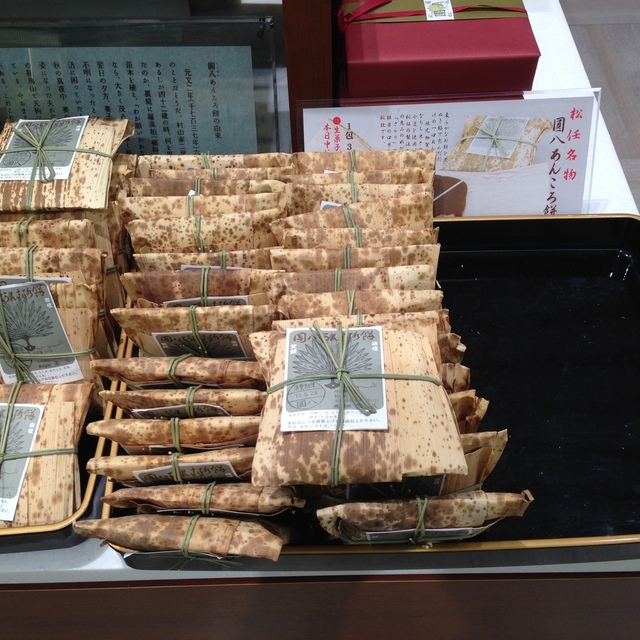 |
|
| I like the policy that they don’t make them too much. | |
| この作り過ぎないというポリシーが好きです。 | |
| The Expiration date is only the day, so it's difficult to give it someone as souvenirs. |
|
| 賞味期限が当日限りなので、お土産としてあげるのは難しいのです。 | |
expiration(エクスパレイション)終了、満期、満了 expiration date 賞味期限 expire(エクスパイアー) 満期になる、終了する、期限が切れる(動詞) |
|
| Because they don’t add lots of sugar and food additives | |
| たっぷりの砂糖や食品添加物を入れてないからですね。 | |
| But we can freeze Ankoro at home, and natural defreeze for 4 or 5 hours and eat. |
|
| でも私達は家庭で、あんころを冷凍して、好きな時に4〜5時間自然解凍して食べることが出来ます。 | |
| And Enpachi sells "Frozen Ankoro " to long distance, too. | |
| そして圓八も遠方へは「冷凍あんころ」を販売しています。 | |
| Well, Akafuku is the opposite of Enpachi. | |
| さて、ここで圓八のあんころと対照的なのが赤福です。 | |
| Akafuku produces lots of ankoro , so they are never sold out. | |
| 赤福は、たくさん生産しているので、決して売り切れになることはありません。 | |
| Then what did they do the leftover? | |
| それでは赤福は残ったあんころ餅をどうしていたのでしょうか? | |
| According to the newspaper, Akafuku freezed the leftover ankoromochi the day before secretly, defrosted and sold them again with disguise to change from defrosted date to made date. |
|
| 新聞によると、赤福は前日に余ったあんころ餅をこっそり冷凍保存して、解凍して 解凍年月日を製造年月日に偽装してまた売っていました。 |
|
| Akafuku has 21 direct management shop and 307 indirect management shop (station, service area, souvenir shop, shopping mall). |
|
| 赤福は直営店21店、委託店(駅、サービスエリア、土産物店、 ショッピングセンターなど)307店を持っています。 |
|
| But Enpachi has only 2 direct management shop and 11 indirect management shop. |
|
| それに対して、圓八は直営店が2店、委託店11店だけです。 | |
| We have a proverb in Japan “If we extend Byobu and shop too much, they will fall down." |
|
| 日本には「屏風と商売は広げすぎると倒れる」ということわざがあります。 | |
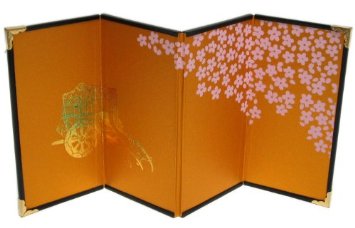 This is folding screen called "Byobu"in Japan. これは日本で”屏風(びょうぶ)と呼ばれている折り畳み式のスクリーンです。 |
|
| I think that’s true, that depends on the case, of course. | |
| もちろん場合によりますが、それは真実だと思います。 | |
 |
|
| 2016年3月31日(木)と14日(木) | トップページへ戻る |
| ●These are today's one point lesson by our teacher. | |
| 私たちの先生の今日のワンポイントレッスンです。 | |
| Japanese is compact language. | |
| 日本語は圧縮言語です。 | |
| It's used only in Japan, so Japanese people have deleted some words step by step. |
|
| 日本語は日本でだけ使われているので、日本人は次から次へと言葉を削ってきたのです。 | |
| That's why, Japanese have used one word in many ways. | |
| そういうわけで、日本人は1つの言葉をいろいろな意味で使うようになったのです。 | |
| For example, "meiwaku o kakeru" has lots of meanings. | |
| 例えば、「迷惑をかける」にはたくさんの意味があります。 | |
| You always rely on the dictionary, but it's not good. | |
| あなた方はいつも辞書に頼りますが、それはよくないことです。 | |
rely on 〜 〜に頼る |
|
| When you translate Japanese to English, you have to do concretely with the time, place, situation, action, and so on. |
|
| 日本語を英語に訳す時は、時間や場所、場合、行動などを具体的に説明して訳さなければなりません。 | |